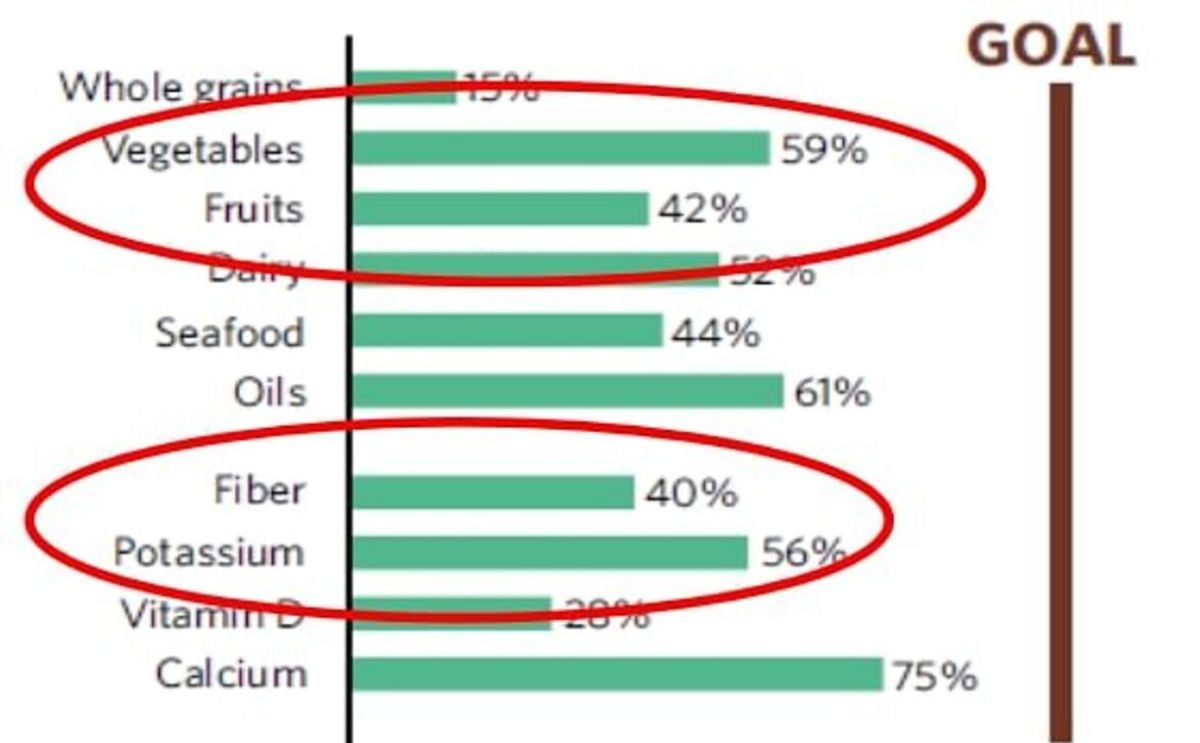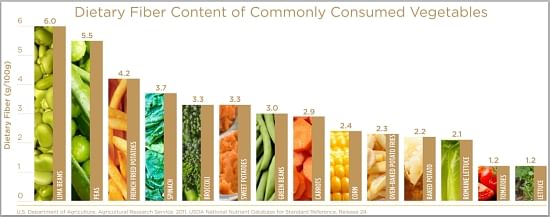Actual consumption by Americans as a percentage of goal (2010 Dietary Guidelines for Americans)
APRE Research Highlights Potato as Important Source of Dietary Fiber

By contributing approximately 7% of dietary fiber to the U.S. food supply, new research from APRE found that white potatoes are an importance source of this nutrient for Americans.
With or without the skin and regardless of cooking method, the dietary fiber content of white potatoes compares favorably to that of other vegetables. Improved gastrointestinal health and many other health benefits have been attributed to higher levels of dietary fiber consumption.
However, less than 3% of all males and females in the United States consume sufficient amounts of this critical nutrient. Because of this population-wide shortfall, dietary fiber has been identified as one of the four nutrients of concern in the 2010 Dietary Guidelines for Americans.
Lead author Maureen Storey, President and CEO of APRE (Alliance for Potato Research and Education), and colleague Patricia Anderson compared mean dietary fiber intakes among children and adolescents (2-19 years) and adults (20+ years) across sex, age, race/ethnicity, family income, and percentage of poverty threshold using data from the 2009-2010 National Health and Nutrition Examination Survey (NHANES). They found that consumption of dietary fiber was far below recommended intake levels for all age groups, with mean intakes of 13.7 g/day among children and adolescents and 17.1 g/day among adults.
Read the entire study (full text) at Nutrition Research.











